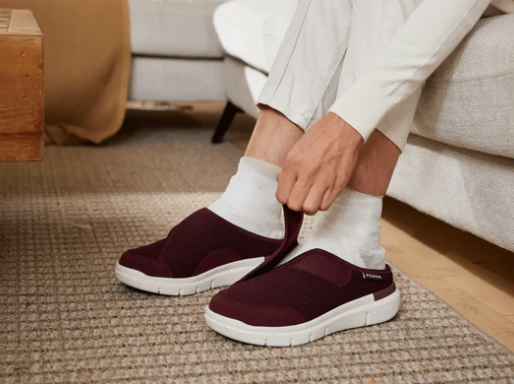For men living with diabetes, foot health is more than just a matter of comfort—it’s a matter of long-term well-being. Diabetes can cause nerve damage, circulation issues, and increased risk of infections, which makes the feet especially vulnerable. The wrong pair of shoes can lead to blisters, sores, or ulcers that may develop into serious complications.
That’s why investing in the right pair of diabetic shoes for men is essential. These shoes are designed to provide extra cushioning, protection, and stability—helping men stay active, comfortable, and safe.
Why Diabetic Shoes Are Different
Unlike regular footwear, diabetic shoes are made to minimize the risks that come with sensitive feet. They are carefully designed to:
- Reduce pressure points that could cause sores or ulcers.
- Provide a wide and deep fit to prevent toe crowding.
- Include cushioned insoles for shock absorption and comfort.
- Use seamless interiors to avoid rubbing or irritation.
- Support circulation with non-restrictive, breathable materials.
In short, they combine medical necessity with everyday comfort.
Key Features of Diabetic Shoes for Men
When shopping for diabetic-friendly shoes, pay attention to these must-have features:
1. Wide and Deep Toe Box
Prevents compression of toes, ideal for men with bunions, hammertoes, or swelling.
2. Extra Cushioning
Shock-absorbing midsoles protect sensitive feet and joints from impact during walking.
3. Adjustable Closures
Velcro straps or laces allow for a customized fit, especially useful if your feet swell during the day.
4. Seamless Interior Design
Eliminates rubbing and pressure points, reducing the chance of skin breakdown.
5. Supportive Insoles
Removable insoles provide arch support and can be replaced with custom orthotics if needed.
6. Slip-Resistant Outsoles
Offer stability and help prevent falls, a common concern for older adults with diabetes.
7. Breathable Materials
Mesh or perforated leather keeps feet cool and reduces moisture buildup, lowering infection risk.
Who Should Wear Diabetic Shoes?
Diabetic shoes are highly recommended for men who:
- Have neuropathy (nerve damage) with reduced foot sensation.
- Experience circulation problems that slow healing.
- Suffer from foot deformities like bunions or hammertoes.
- Need extra room for swollen feet or custom orthotics.
- Simply want added comfort and protection for everyday wear.
Types of Diabetic Shoes for Men
Depending on your needs and lifestyle, you’ll find options such as:
- Walking Shoes – Cushioned and supportive for daily activity.
- Slip-On Shoes – Convenient for easy wear while still offering comfort.
- Dress Shoes – Stylish options that don’t compromise foot health.
- Sandals – Designed with extra support and wide straps for warm weather.
- Boots – Durable protection with comfort for outdoor use.
Tips for Choosing the Right Pair
- Get measured properly – Foot size and width can change over time.
- Shop later in the day – Feet swell naturally, ensuring a better fit.
- Try them with diabetic socks – These add an extra layer of protection.
- Check for certifications – Some shoes are Medicare-approved for diabetic use.
- Replace shoes regularly – Worn-out shoes lose cushioning and protection.
Final Thoughts: Prioritize Comfort and Health
For men with diabetes, the right footwear is about more than style—it’s about safeguarding your health. Diabetic shoes for men combine wide fits, soft cushioning, seamless interiors, and stable soles to keep your feet protected and comfortable.
By investing in quality diabetic shoes, you not only reduce the risk of complications but also improve your mobility, independence, and overall quality of life.
Your feet carry you through every stage of life—give them the care and comfort they deserve.





Comments